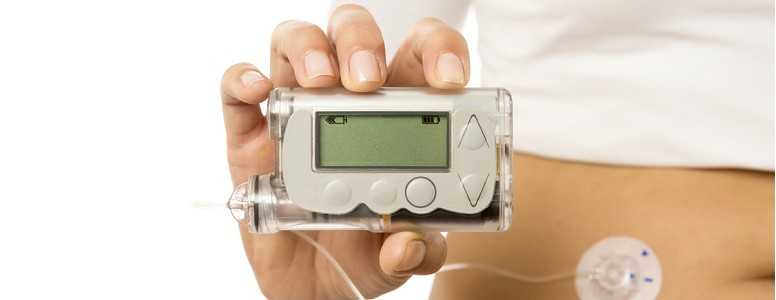In both the USA and UK, people with type 1 diabetes are recommended to adjust insulin for dietary fat. It is known that combining fat with carbohydrate at meals can slow how quickly food is absorbed and this can affect the required timing and dose of insulin.
To date, the optimal way of adjusting doses in response to differing levels of fat in a meal has not been known.
However, a new study, by researchers from Australia and the USA, has investigated the dose adjustments needed for handling differing levels of fat for people with type 1 diabetes using insulin pumps.
The research involved participants having meals with 45g of carbohydrate and with 0g, 20g, 40g or 60g of fat. The participants attended the research clinic on nine to 12 occasions.
To control blood glucose levels, participants used their own insulin to carbohydrate ratios and took a dual-wave bolus dose on their pumps, with the amount of insulin split 50/50 between the two waves over hours. A dual wave bolus involved an immediate initial bolus of insulin followed by a second bolus delivered gradually over a set period of time.
The researchers found that the more fat the meals contained, the lower blood glucose levels were in the first two hours of eating the meal and the higher blood glucose levels were in two to five hours after eating.
In subsequent visits, participants repeated the meals, but a model was used to predict the insulin dosing. The experiments to get the right doses were done until good blood glucose control was achieved.
The findings of these further experiments allowed the researchers to see what split of insulin dosing was needed to achieve good control.
The results showed that, for the 20g of fat meal, a dual-wave bolus was delivered over 73 minutes. This meal required 6% more insulin than the meal without fat and the split of insulin across the two waves of the dual-wave bolus was 74% of the dose for the first wave and 26% of the dose for the second wave.
For the 40g of fat meal, a dual-wave bolus was delivered over 75 minutes. This meal also required 6% more insulin than the meal without fat and the split of insulin across the dual-wave bolus was 63% of the dose on the first wave and 37% for the second wave.
Finally, the 60g of fat meal required the dual-wave bolus to be delivered over 105 minutes. The meal required 21% more insulin than the meal without fat. The split of insulin across the two waves of bolus were 49% of the dose for the first wave and 51% for the second wave.
The results are fascinating to see and may help to inform future recommendations of insulin dose adjustment for meals involving dietary fat.
As insulin dosing can vary significantly from one individual to another, it is best to discuss insulin doses with your diabetes health team if you feel you may benefit from a significant dose adjustment. Your diabetes health team can help you to make dosing adjustments with the right precautions for safety.
The study is published online, ahead of print, by the Diabetes Care journal.





